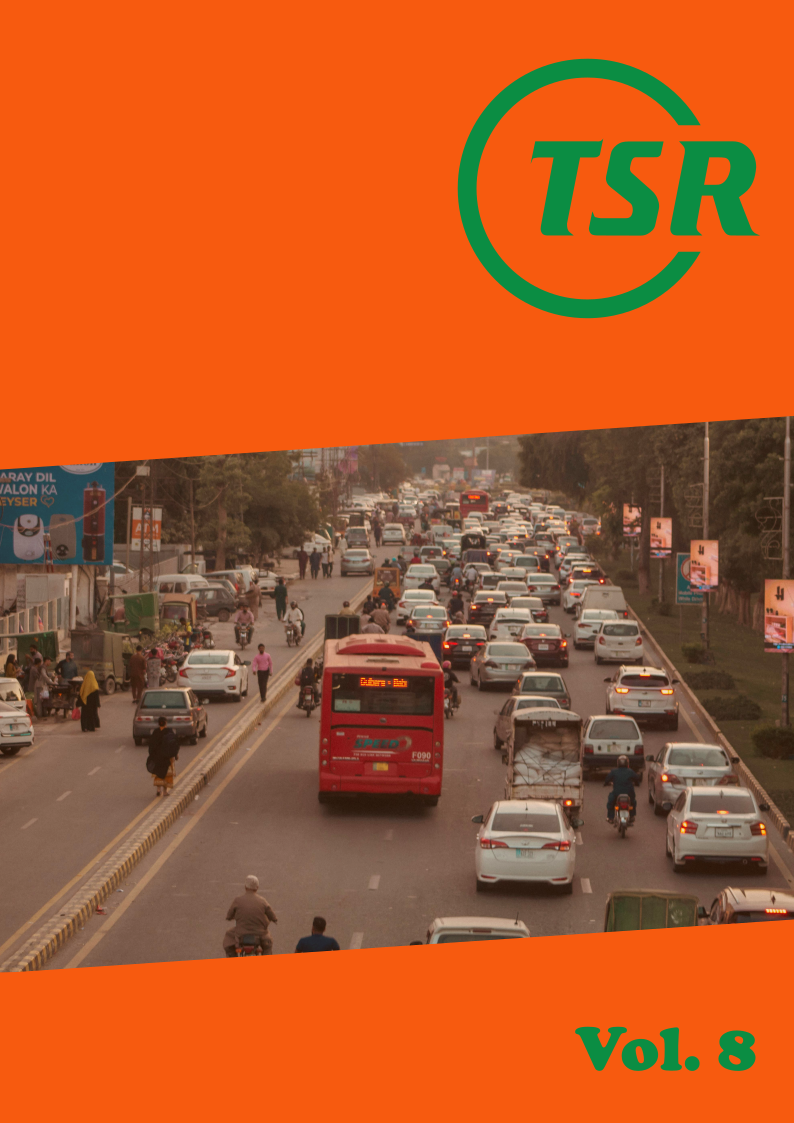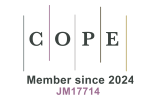Road safety culture and the Safe System: comparing beliefs and behaviours in African and European countries
DOI:
https://doi.org/10.55329/bbmj5348Keywords:
African countries, European countries, road safety culture, Safe SystemAbstract
The study compares national road safety culture (RSC) in three European countries—Norway, Sweden, and the Netherlands—which are widely recognized as leaders in Safe System implementation and have maintained the world's best road safety records for several years, with three African countries with poorer road safety records—Ghana, Tanzania, Zambia. The primary focus is on continental-level comparisons, to identify the elements of RSC where we see the biggest differences between the African and the European countries. The study is based on survey data collected from car drivers and pedestrians (n = 3772), interviews (n = 46) and fieldwork. The study is explorative, as it examines four different RSC elements. This is important, as there are few other studies comparing RSC across African and European countries, including several transport modes. The elements of RSC where we see the biggest differences between the African and the European countries are: (a) fatalistic beliefs about road safety and (b) the social valuation of walking as a mode of transport, compared with motorized transport. The fatalistic beliefs are related to road safety violations, which in turn are related to accident involvement. Thus, influencing fatalistic beliefs regarding road safety, and increasing the cultural valuation of walking and pedestrians are likely to improve road safety in the African countries. Finally, interviewees in the African countries pointed to corruption as a potential factor impeding the efficiency of enforcement. We have not measured this, but future studies of RSC should also include beliefs and practices related to corruption, as these are likely to be related to the level of road violations.
Downloads
References
Benton, J. S., Jennings, G., & Behrens, R. (2023). “Walking is our asset”: How to retain walking as a valued mode of transport in African cities. Cities, 137, 104297. DOI: https://doi.org/10.1016/j.cities.2023.104297
Berkowitz, A. D. (2005). An overview of the social norms approach. In L. Lederman & L. Stewart (Eds.), Changing the culture of college drinking: A socially situated health communication campaign (pp. 193–214). Hampton Press.
Bjørnskau, T. (2014). The Zebra crossing game—A game theoretic model to explain counter-rule interaction between cars and cyclists. Proceedings of the Third International Cycling Safety Conference.
Bjørnskau, T., & Sagberg, F. (2005). What do Novice Drivers Learn during the First Months of Driving? Improved Handling Skills or Improved Road User Interaction? In G. Underwood (Ed.), Traffic and Transport Psychology Theory and Application (pp. 129–140). Elsevier. DOI: https://doi.org/10.1016/B978-008044379-9/50166-7
Boua, M., Kouabenan, D. R., & Belhaj, A. (2024). Fatalistic Beliefs, Naive Causal Explanations of Accidents and Road Safety Behaviors. Psychol Stud, 69, 49–58. DOI: https://doi.org/10.1007/s12646-023-00763-1
Braun, V., & Clarke, V. (2006). Using thematic analysis in psychology. Qualitative Research in Psychology, 3(2), 77–101. DOI: https://doi.org/10.1191/1478088706qp063oa
Cialdini, R. B., Reno, R. R., & Kallgren, C. A. (1990). A focus theory of normative conduct: Recycling the concept of norms to reduce littering in public places. J. Person. Soc. Psychol., 58, 1015–1026. DOI: https://doi.org/10.1037//0022-3514.58.6.1015
Dotse, J. E., & Rowe, R. (2021). Modelling Ghanaian road crash risk using the Manchester driver behaviour questionnaire. Safety Science, 139. DOI: https://doi.org/10.1016/j.ssci.2021.105213
Elvebakk, B. (2015). Paternalism and acceptability in road safety work. Safety Science, 79(2015), 298–304. DOI: https://doi.org/10.1016/j.ssci.2015.06.013
Elvik, R., Høye, A., Vaa, T., & Sørensen, M. (2009). The Handbook of Road Safety Measures (2nd ed.). Emerald Insight. DOI: https://doi.org/10.1108/9781848552517
Gehlert, T. C., Hagemeister, T., & Özkan, Ö. (2014). Road safety climate attitudes of road users in Germany. Transportation Research Part F: Traffic Psychology and Behaviour, 26(Part B). DOI: https://doi.org/10.1016/j.trf.2013.12.011
Guldenmund, F., Cleal, B., & Mearns, K. (2013). An exploratory study of migrant workers and safety in three European countries. Saf. Sci., 52, 92–99. DOI: https://doi.org/10.1016/j.ssci.2012.05.004
Kouabenan, D. R. (1998). Beliefs and the perception of risks and accidents. Risk Analysis, 18(3), 243–252. DOI: https://doi.org/10.1111/j.1539-6924.1998.tb01291.x
Luria, G., Boehm, A., & Mazor, T. (2014). Conceptualizing and measuring community road-safety climate. Saf. Sci., 70, 288–294. DOI: https://doi.org/10.1016/j.ssci.2014.07.003
McIlroy, R. C., Kokwaro, G. O., Wu, J., Jikyong, U., Nam, V. H., Hoque, M. S., Preston, J. M., Plant, K. L., & Stanton, N. A. (2020). How do fatalistic beliefs affect the attitudes and pedestrian behaviours of road users in different countries? A cross-cultural study. Accid Anal Prev, 139. DOI: https://doi.org/10.1016/j.aap.2020.105491
Nævestad, et al. (2024). Deliverable 5.2: Mapping of Road Safety Culture (AfroSAFE Project) [Deliverable]. Horizon Europe.
Nævestad, T.-O. (2021). Safety culture. In R. Vickerman (Ed.), International Encyclopedia of Transportation (Vol. 1). Elsevier. DOI: https://doi.org/10.1016/B978-0-08-102671-7.10180-0
Nævestad, T.-O., Laiou, A., Phillips, R. O., Bjørnskau, T., & Yannis, G. (2019). Safety Culture among Private and Professional Drivers in Norway and Greece: Examining the Influence of National Road Safety Culture. Safety, 5, 20. DOI: https://doi.org/10.3390/safety5020020
Nævestad, T.-O., Laiou, A., Rosenbloom, T., Elvik, R., & Yannis, G. (2022). The role of values in road safety culture: Examining the valuation of freedom to take risk, risk taking and accident involvement in three countries. Transportation Research Part F: Traffic Psychology and Behaviour, 84, 375–392. DOI: https://doi.org/10.1016/j.trf.2021.12.012
Nævestad, T.-O., Phillips, R., Levlin, G. M., & Hovi, I. B. (2017). Internationalization in Road Transport of Goods in Norway: Safety Outcomes, Risk Factors and Policy Implications. Safety, 3, 22. DOI: https://doi.org/10.3390/safety3040022
Nævestad, T.-O., Sam, E. F., Blom, J., Fiangor, A., Egner, L. E., & Elvik, R. (2025). Comparing national road safety culture among bus drivers in Norway and Ghana. Transportation Research Procedia, 89. DOI: https://doi.org/10.1016/j.trpro.2025.05.061
Ngueutsa, R., & Kouabenan, D. R. (2017). Fatalistic beliefs, risk perception and traffic safe behaviors. European Review of Applied Psychology, 67(6), 307–316. DOI: https://doi.org/10.1016/j.erap.2017.10.001
Omari, K., & Baron-Epel, O. (2013). Low rates of child restraint system use in cars may be due to fatalistic beliefs and other factors. Transportation Research Part F: Traffic Psychology and Behaviour, 16, 53–59. DOI: https://doi.org/10.1016/j.trf.2012.08.010
Özkan, T., Lajunen, T., Chliaoutakis, J. E., Parker, D., & Summala, H. (2006). Cross-cultural differences in driving behaviours: A comparison of six countries. Transp. Res. Part F, 9, 227–242. DOI: https://doi.org/10.1016/j.trf.2006.01.002
Teye-Kwadjo, E. (2019). Risky driving behaviour in urban Ghana: The contributions of fatalistic beliefs, risk perception, and risk-taking attitude. International Journal of Health Promotion and Education, 57(5), 256–273. DOI: https://doi.org/10.1080/14635240.2019.1613163
The United Nations Economic Commission for Africa (UNECA). (2015).
Torfs, K., Delannoy, Sh., Schinckus, L., Willocq, B., Van den Berghe, W., & Meesmann, U. (2021). Road Safety culture in Africa. Results from the ESRA2 survey in 12 African countries (ESRA Project (E-Survey of Road Users’ Attitudes)). Vias institute.
Van den Berghe, W., Schachner, M., Sgarra, V., & Christie, N. (2020). The association between national culture, road safety performance and support for policy measures. IATSS Research, 44(3). DOI: https://doi.org/10.1016/j.iatssr.2020.09.002
Warner, H. W., Özkan, T., Lajunen, T., & Tzamalouka, G. (2011). Cross-cultural comparison of drivers’ tendency to commit different aberrant driving behaviours. Transp. Res. Part F, 14, 390–399. DOI: https://doi.org/10.1016/j.trf.2011.04.006
WHO. (2016). ROAD SAFETY IN THE AFRICAN REGION 2015.
WHO. (2023). Global status report on road safety 2023.
WHO. (2024). Country profiles.
Zhang, C., & Conrad, F. (2014). Speeding in Web Surveys: The tendency to answer very fast and its association with straightlining. Survey Research Methods, 8(2), 127–135.
Published
How to Cite
Issue
Section
License
Copyright (c) 2025 Tor-Olav Nævestad, Sonja Forward, Enoch F. Sam, Jaqueline Masaki, Daniel Mwamba, Thomas Miyoba, Filbert Francis, Anthony Fiangor, Jenny Blom, Ingeborg Storesund Hesjevoll, Aliaksei Laureshyn

This work is licensed under a Creative Commons Attribution 4.0 International License.
Funding data
-
HORIZON EUROPE Climate, Energy and Mobility
Grant numbers 101069500


















